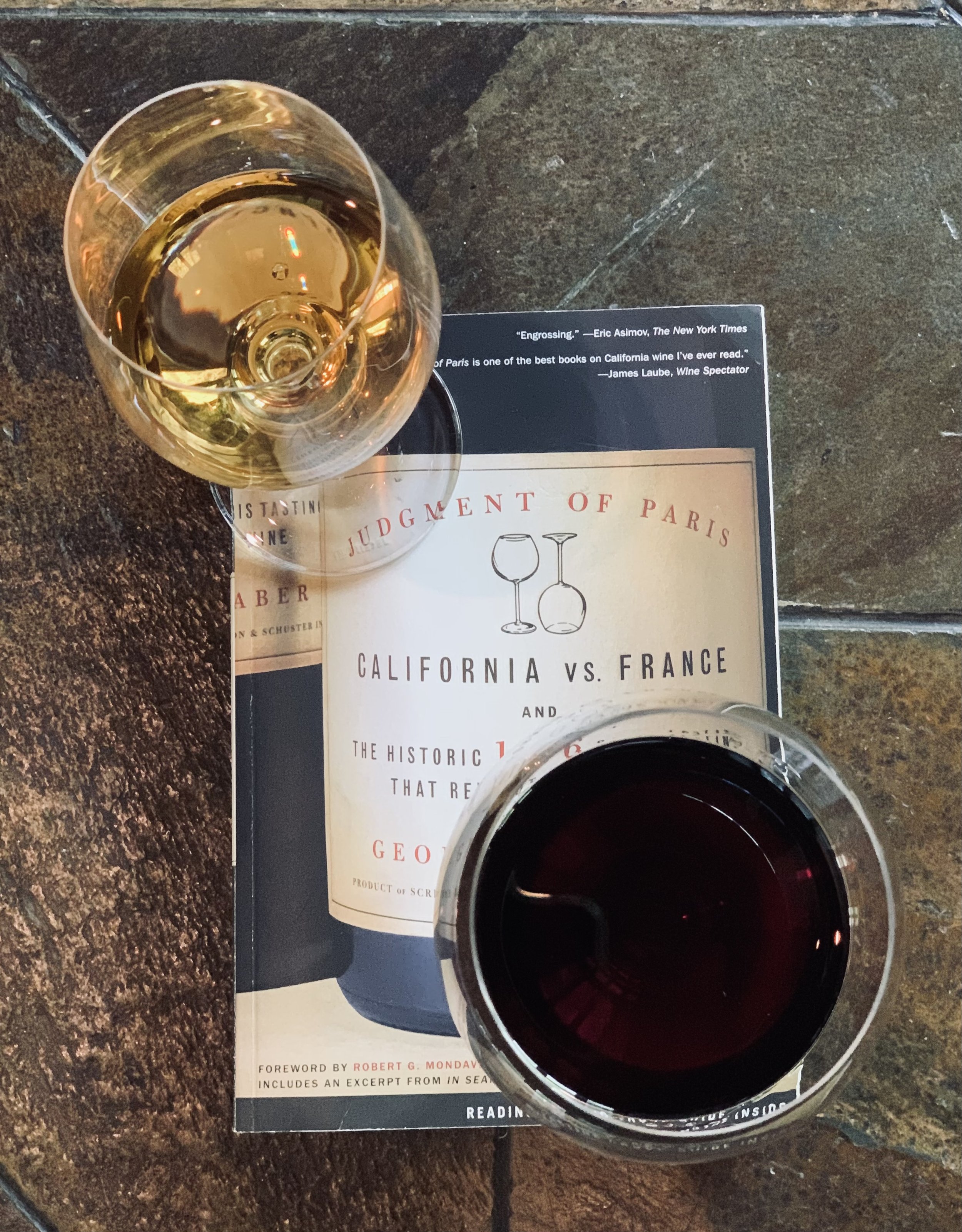Judgement of Paris
by Tim Powers
On May 24, 1976, Patricia Gallagher and Steven Spurrier gathered an elite panel of French wine experts in a wine tasting that would change the world of wine forever. Although poorly attended, with only one of the reporters invited attending the historic event, it sent shockwaves through the international wine community, proving not only that there were incredible wines being made outside of France, but that the New World, California in particular, was a force with which to be reckoned.
Patricia Gallagher, an American wine scholar and educator, was inspired by the then-upcoming bicentennial of the United States. She wanted a way to pay homage to the growth of the United States since the American Revolution and highlight the wines coming from the country. Her co-director at L’Academie du Vin, Steven Spurrier, quickly agreed, as he himself had been inspired by the spectacular Californian wines that had been coming into his Parisian wine shop, Les Caves de la Madeleine, and together they started to create what was, at the time, an innocuous tasting of Californian wines.
Spurrier, who was one of the few English-speaking members of the Parisian wine industry at the time, was a magnet for the fledgling California wine makers and distributors. He encouraged Patricia to travel throughout California, and to compile a list of the top tier wineries and winemakers that deserved to be featured. Spurrier then narrowed it down further to the final twelve, six Cabernet Sauvignon reds, and six Chardonnay whites, chosen to represent the terroir and undiscovered excellence of the budding wine region.
They secured a room at the Intercontinental hotel in Paris and arranged for nine of the most well renowned individuals of the French Wine community to serve as judges. However, a mere two weeks before the tasting was due to take place, Spurrier decided to add a twist. Instead of simply tasting the twelve Californian wines and asking for reviews, he would offer the wines alongside eight French ones in a side by side, blind competition. Insistent on making it a top-tier tasting, he secured the most well-known of French wines of the time, four grand cru white wines from Burgundy, and 4 great châteaux red blends from Bordeaux.
The white wines were compared first, side by side and without any labels, markings, or delineations. The French judges’ scores were averaged out to find the winner, while Gallagher and Spurrier, to remain impartial, did not include their rankings in the mean. According to George Tabor, an American journalist for TIME magazine, and the lone reporter who attended the tasting, the French judges were incensed to learn that they had picked none other than the 1973 Chateau Montelena Chardonnay from Calistoga, CA, as the clear winner.
Now determined to pick a French wine as the superior red, the judges then began rating the red wines, grading them much harsher than in the previous round. It would be all for naught, for despite their best attempts to filter out the New World wines, the winner, albeit much closer than the white competition, was the 1973 Stag’s Leap Wine Cellars Cabernet Sauvignon.
The full magnitude of the fallout from this historic event was slow to manifest. Steven Spurrier was blacklisted from the French wine industry for years, and many of the French judges were asked to resign from their positions in the industry. The media in France paid very little attention to the event even after the results were announced, with only two papers running articles on the story over the next year, and both of them calling it a complete farce.
In California the reaction was much different, with the winemakers of the winning wines being elated to hear the results. Most of the vintners, such as Mike Grgich, the winemaker of the Chateau Montelena Chardonnay, had not known that their wines had even been chosen for the tasting, let alone having bested the prestigious French wines. This victory propelled Californian wines into the spotlight, allowing for the rapid expansion of Napa Valley and other California AVAs, and an increase from around 300 wineries in California in the 1970s, to over 3,000 today.
This victory was not only a triumph for California but was a heroic victory for New World wines in general. For the first time, wines from west of the Atlantic Ocean were seen as an equal to the wines of the Old World, and it allowed for an increase in acceptance in the wine industry on a level that has not been seen since.
As we recognize the 46th anniversary of this historic event, be on the lookout for a new upcoming documentary on SOMM TV, entitled “Judgment of Paris”, coming out this week, and enjoy a glass of your favorite California, or any New World wine, as we remember how an innocuous tasting in a Parisian hotel conference room changed the world.

